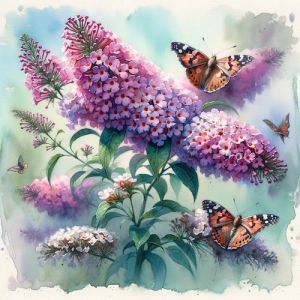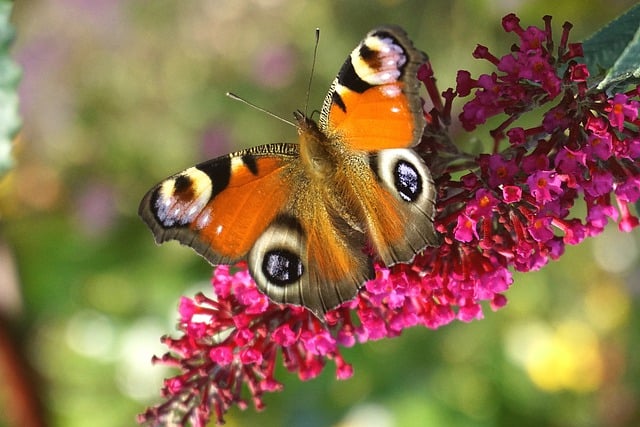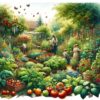Cultivation, Care, and Attracting Pollinators
Introduction
Welcome to our gardening blog, where today we explore the enchanting world of the butterfly bush, a delightful addition to any garden. Scientifically known as Buddleja davidii, the butterfly bush is cherished by gardeners for its vibrant blooms and its ability to attract butterflies and other pollinators. In this comprehensive guide, we’ll delve into the various aspects of the butterfly bush, from its origins to its cultivation, ensuring you have all the information needed to nurture this beautiful plant in your garden.
Butterfly Bush Overview
Common Names: Butterfly Bush, Summer Lilac
Scientific Name: Buddleja davidii
Family: Scrophulariaceae
The butterfly bush is a deciduous shrub known for its fragrant, cone-shaped clusters of flowers that bloom in a spectrum of colors, including purple, pink, white, and magenta. Originating from China, it has spread across the globe due to its ornamental appeal and its role in supporting pollinators.
Native Habitat and Origin
The butterfly bush is native to central and western China, where it thrives in rocky slopes, woodland margins, and disturbed areas. It was introduced to Europe and North America in the 19th century as an ornamental plant and has since become naturalized in many regions.
History of Cultivation
The cultivation of butterfly bush for ornamental purposes dates back to the 19th century when it was introduced to Europe by plant collectors. Its popularity soared due to its ability to attract butterflies, hummingbirds, and other beneficial insects to the garden. Today, it is a beloved plant in gardens worldwide, cherished for its beauty and ecological value.
Popular Cultivars
- ‘Black Knight’: Deep purple flowers with a rich, honey-like fragrance.
- ‘Royal Red’: Deep crimson-red blooms that stand out in the garden.
- ‘Pink Delight’: Soft pink flowers that attract butterflies and bees.
- ‘White Profusion’: Pure white blossoms that brighten up the garden.
- ‘Nanho Blue’: Lavender-blue flowers on a compact, dwarf variety.
Where to Find Seed
Butterfly bush seeds and plants can be found at nurseries, garden centers, and online retailers specializing in ornamental plants. Look for reputable suppliers that offer healthy, well-established specimens.
Zones and Conditions
Butterfly bushes are hardy in USDA zones 5 to 9, although specific cultivars may have different tolerances. They thrive in full sun and well-drained soil but can tolerate a range of soil types. Adequate air circulation and regular pruning help prevent issues such as powdery mildew.
How to Plant and Care
- Choose a sunny location with well-drained soil.
- Dig a hole twice as wide as the root ball and plant the butterfly bush at the same depth as it was in the container.
- Water thoroughly after planting and keep the soil consistently moist until the plant establishes.
- Prune in late winter or early spring to encourage vigorous growth and abundant blooms.
- Mulch around the base of the plant to retain moisture and suppress weeds.
Attracting Butterflies and Pollinators
Butterfly bushes are renowned for their ability to attract butterflies, hummingbirds, and bees to the garden. Planting butterfly bush alongside other nectar-rich flowers creates a haven for pollinators, supporting biodiversity and enhancing the beauty of the garden.
Conclusion
The butterfly bush, with its fragrant blooms and irresistible allure to butterflies, is a must-have for any garden enthusiast. Whether you’re seeking to attract pollinators or simply adding a splash of color to your landscape, the butterfly bush promises to delight year after year.
Recent Posts

Coffee Grounds for Plants: Unveiling the Myths and Truths

The 7 Most Popular Succulents to Grow in Your Garden

Cultivating a Healthier You, One Seed at a Time

5 Great Gifts for the Urban Gardener: Enhance Your Green Space with These Must-Have Tools

Understanding “How Much is a Yard of Dirt?” A Comprehensive Guide for Gardeners












You must be logged in to post a comment.